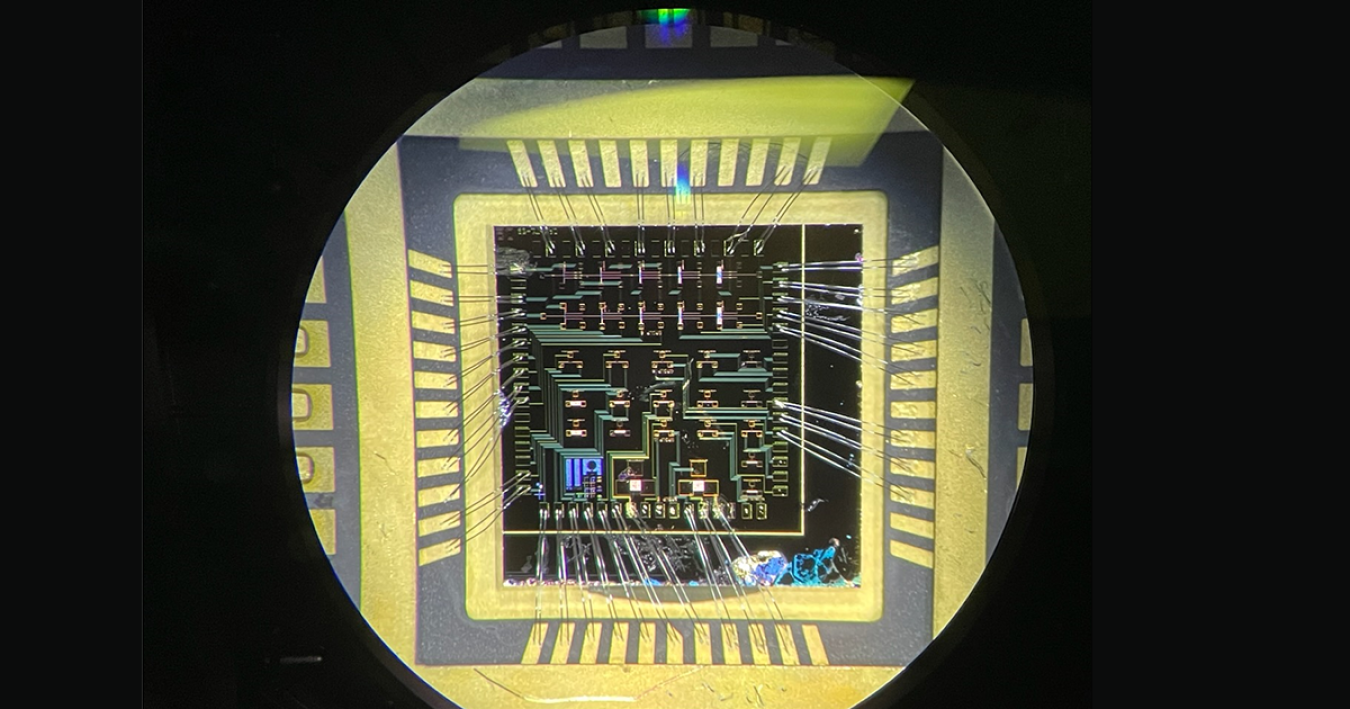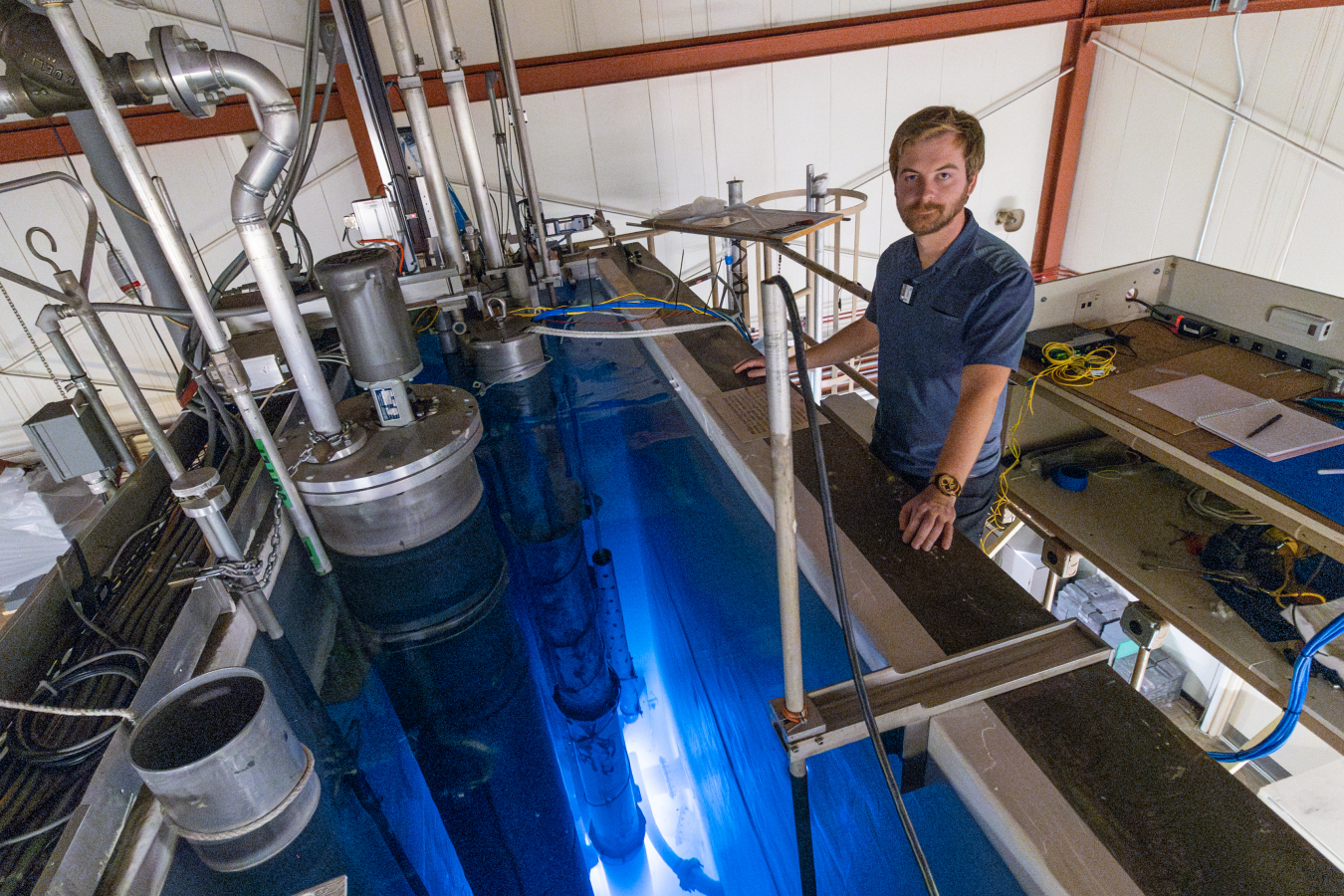New research finds gallium nitride semiconductors can successfully withstand the harsh environment near a nuclear reactor core.
June 25, 2024

New gallium nitride transistors under the microscope.
New research at Oak Ridge National Laboratory (ORNL) demonstrated that gallium nitride semiconductors can successfully withstand the harsh environment near a nuclear reactor core.
The discovery may make it possible to place electronic components closer to sensors in an operating reactor leading to more precise and accurate measurements and more compact designs.
These findings could one day lead to the use of wireless sensors within nuclear reactors, including advanced small modular and microreactor designs currently under development.
Closer to the Core
Sensors are used to gather information from a nuclear reactor and can identify potential equipment failures before they happen. This can help prevent unscheduled shutdowns that can cost companies millions of dollars each day in lost generation revenue.
The sensors are connected to complex circuitry that are placed further away from the reactor core to protect the electronics from heat and radiation.
As a result, the data are processed through lengthy cables that can pick up additional noise and degrade the signal.
To help shorten the cabling and improve the accuracy and precision of the sensors, ORNL researchers explored the use of gallium nitride, which is commonly used in consumer electronics, as a substitute for silicon-based transistors.

Gallium Nitride Takes the Heat
Gallium nitride is a promising wide-bandgap semiconductor material that is more resistant to heat and radiation than silicon.
ORNL researchers placed gallium nitride transistors close to a research reactor core at The Ohio State University where they successfully withstood high heat and radiation for three consecutive days, logging seven hours with the reactor at 90 percent power.
The transistors were able to handle a 100 times higher accumulated dose of radiation than standard silicon devices at a sustained temperature of 125 degrees Celsius—far exceeding the team’s original expectations.
“We fully expected to kill the transistors on the third day, and they survived,” said lead researcher Kyle Reed, a member of the Sensors and Electronics group at ORNL. “Our work makes measuring the conditions inside an operating nuclear reactor more robust and accurate.”
Research indicates that gallium nitride transistors are capable of surviving at least five years in a reactor, the minimum amount of time electronics need to persist to align with maintenance schedules, avoiding unnecessary shutdowns to replace failed components.
The research may also be a key discovery for advanced microreactors, which due to their compact size will need sensors capable of withstanding more adverse radiation conditions than current U.S. reactors.
What’s Next?
Ohio State University is now working on computer models to predict how various circuit designs will perform under different levels of radiation and temperature.
Building off of current applications of gallium nitride in devices that support the cell phone industry, researchers hope to one day demonstrate that gallium nitride circuits can be used to wirelessly transmit data from sensors.
The research project was funded by the Advanced Sensors and Instrumentation program, and the irradiation was performed as part of a Rapid Turnaround Experiment funded by the Nuclear Science User Facilities program. Both programs are part of the U.S. Department of Energy, Office of Nuclear Energy.
ORNL researchers and staff contributing to the project included Kyle Reed, Dianne Ezell, Nance Erickson, Brett Witherspoon, Craig Gray, Emma Brown, Kevin Deng, Adam Buchalter, and Caleb Damron.
Learn more about our work in nuclear sensors development at Advanced Sensors & Instrumentation (inl.gov)

